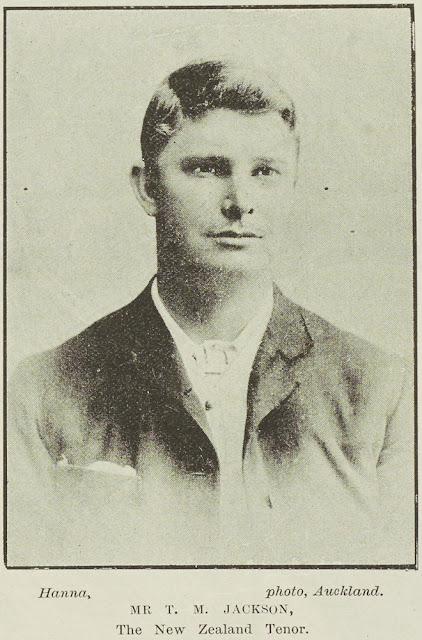Thomas Mandeno Jackson, tenor and auctioneer

Recently while describing photographs from the 1893 New Zealand Graphic and Ladies Journal I came across a portrait simply entitled ‘Mr T.M. Jackson, the well known New Zealand tenor.’ I tried many Google and Wikipedia searches to try and find the forenames for Mr Jackson and a little about him. These searches were all unsuccessful. They led me to conclude that unless one is searching for a famous Australian singer like Dame Nellie Melba, Wikipedia and Google tend to be very much centred on the northern hemisphere. New Zealand opera singers before the twentieth century seem to be completely ignored by the internet. Perhaps librarians can take some comfort from the fact that the all-powerful Google is not, in fact, omniscient. Instead in this case I had to turn to New Zealand Papers Past to find out who Mr Jackson was, and then I discovered he was well known for his auctioneering day-job. The New Zealand Illustrated Magazine for 1 March 1900 gives us a good early biography of Thomas M




